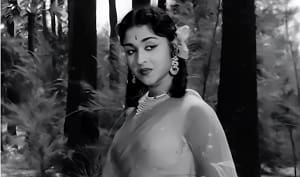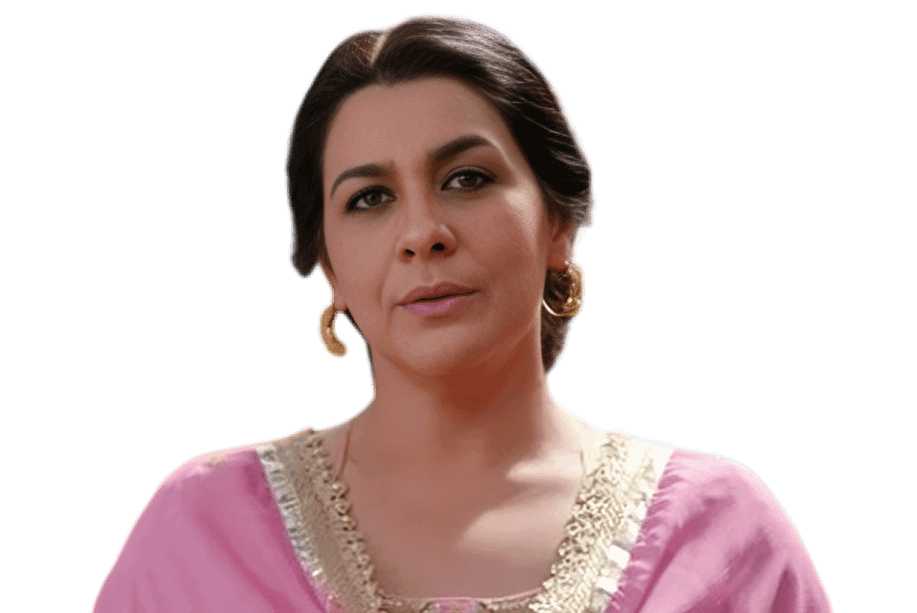-
Saroja Devi: The Empress of South Indian Cinema

Bangalore Saroja Devi, popularly known as B. Saroja Devi, is one of the most celebrated and iconic actresses in the history of Indian cinema. She ruled the silver screen during the golden era of Indian films, particularly between the 1950s and 1970s. Known for her versatility, grace, and magnetic screen presence, Saroja Devi was a pan-Indian star who acted in Tamil, Telugu, Kannada, and Hindi films. Her contribution to Indian cinema is immeasurable, with more than 190 films to her credit.
Quick Facts
| Full Name | Bangalore Saroja Devi |
| Date of Birth | 7 January 1938, Died 14 July 2025 |
| Place of Birth | Bangalore, Mysore State (now Karnataka) |
| Languages Acted In | Kannada, Tamil, Telugu, Hindi |
| Debut Film | Mahakavi Kalidasa (1955) – Kannada |
| Spouse | Sri Harsha (d. 1986) |
| Children | No biological children |
| Major Awards | Padma Bhushan, Padma Shri, Filmfare |
| Social Media | No official personal accounts |
| Residence | Bangalore, India |
| Net Worth (2025) | ₹50–60 Crore INR |
B. Saroja Devi, Indian actress, dies at age 87
स्वर्णिम सिनेमा का एक युग समाप्त हो गया।#Sarojadevi अम्मा सर्वकालिक महानतम थीं। दक्षिण की किसी भी अन्य महिला कलाकार ने उनके जितना नाम और प्रसिद्धि नहीं पाई।
ॐ शांति 🙏🏻🙏🏻🙏🏻😭😭😭😭😭😢😢😢#Sarojadevi pic.twitter.com/fWVFSMCX4d— BIOGRAPHY DADDY (@BiographyDaddy) July 14, 2025
Early Life and Education
- Saroja Devi was born on 7 January 1938 in Bangalore, Kingdom of Mysore, British India (now Karnataka, India). Died 14 JULY 2025, Her father, Bhairappa, was a police officer, and her mother, Rudramma, was a homemaker with an interest in classical music. She was the only daughter among four children.
Saroja Devi received her early education in Bangalore, attending a convent school. She was a bright student and showed early signs of inclination toward performing arts. She trained in Bharatanatyam, a classical dance form, under the guidance of renowned dance gurus. Her proficiency in dance became a stepping stone into the film industry.
Despite being a promising student, her career in cinema took off early, and she eventually left her formal education to pursue acting full-time.
Film Career: From South Indian Cinema to Bollywood Fame
Debut and Rise in South Indian Cinema
Saroja Devi made her acting debut at the age of 17 with the Kannada film “Mahakavi Kalidasa” (1955), which was a massive success. Her performance and beauty were instantly noticed by film producers across South India. It was the Tamil film “Thangamalai Ragasiyam” (1957) that brought her under the national spotlight.
She soon became the reigning queen of Tamil cinema, starring opposite top heroes like M.G. Ramachandran (MGR), Sivaji Ganesan, Gemini Ganesan, and later Rajkumar in Kannada films.
Some of her biggest hits in the South Indian industry include:
- “Kalyana Parisu” (1959) – Tamil
- “Seetha Rama Kalyanam” (1961) – Telugu
- “Sampoorna Ramayana” (1961) – Tamil
- “Sri Krishnadevaraya” (1970) – Kannada
Her performances were characterized by a blend of traditional Indian values and modern screen charisma. She played both glamorous and devotional roles with equal conviction.
Bollywood Career
Saroja Devi entered Bollywood with the film “Paigham” (1959), where she starred opposite the legendary Dilip Kumar. The movie was a success, and her Hindi diction and expressions were appreciated, especially given her South Indian roots. It was a rare feat during that era for a Southern actress to achieve pan-Indian success.
She starred in several notable Hindi films, including:
- “Sasural” (1961) opposite Rajendra Kumar
- “Opera House” (1961)
- “Pyar Kiya To Darna Kya” (1963)
- “Hong Kong” (1962)
- “Beti Bete” (1964)
Although she was not as prolific in Bollywood as she was in Southern cinema, her Hindi film career was respectable, and she earned the admiration of critics and audiences alike. Her beauty and traditional elegance made her a favorite among North Indian audiences too.
Later Career and Transition
As the 1970s progressed, Saroja Devi began transitioning into character roles. She gracefully accepted age-appropriate roles, playing mothers and matriarchs without clinging to leading-lady status. She acted alongside younger actors and in television serials during the 1980s and 1990s.
Some of her later notable works include:
- “Ananda Bhairavi” (1983) – Telugu
- “Hosa Belaku” (1982) – Kannada
- “Ondu Muttina Kathe” (1987) – Kannada, opposite Rajkumar
- “Veerappa Nayaka” (1999) – Kannada
She also served on the Kannada Film Development Board and other film advisory boards, contributing to the policy and cultural growth of Indian cinema.
Awards and Honours
Saroja Devi has been the recipient of several prestigious awards and honors in her lifetime:
- Padma Shri (1969) – Fourth highest civilian award in India
- Padma Bhushan (1992) – Third highest civilian award in India
- Karnataka Ratna (2006) – Highest civilian honor of Karnataka
- Filmfare Lifetime Achievement Award – South (1997)
- NTR National Award (2001)
- Kalaimamani Award from the Tamil Nadu government
She was also conferred Doctorates (D.Litt.) from multiple universities for her contribution to Indian cinema and culture.
Personal Life
In 1967, Saroja Devi married Sri Harsha, an engineer by profession and a business consultant. Their marriage was deeply affectionate and lasted until Sri Harsha’s untimely death in 1986. The loss was a huge emotional blow for her. She chose not to remarry and focused instead on philanthropic work and promoting arts and cinema.
The couple did not have biological children but adopted several underprivileged children and sponsored their education and upbringing.
Philanthropy and Cultural Work
After retiring from active cinema, Saroja Devi devoted her time to social service. She was associated with several charitable institutions, particularly those focused on:
- Education for girl children
- Medical support for underprivileged women
- Promotion of classical Indian dance and arts
She has also set up the B. Saroja Devi Foundation, which offers scholarships and conducts cultural workshops.
Social Media and Public Life
- Saroja Devi maintains a very low profile in the digital age. She is not active on Instagram, Twitter, or Facebook through personal accounts. However, many fan pages and cinema history groups regularly post about her.
Occasionally, she appears at film award ceremonies, cultural festivals, or interviews on television. In 2023, she appeared at the International Film Festival of India (IFFI) as a guest of honor, where she was felicitated for her lifetime contributions.
Death Rumors and Clarification
There have been several hoaxes and false rumors circulated on social media over the years claiming that Saroja Devi passed away. These have always been proven to be untrue.
As of July 2025, B. Saroja Devi is alive, though living a retired life in Bangalore, India. She occasionally appears in public but spends most of her time in solitude or with close family and friends. She has made statements via spokespersons denying such rumors, requesting privacy and respect.
Net Worth and Legacy
Estimated Net Worth (2025): ₹50–60 Crore INR (~$6–7 Million USD)
Though exact figures are not public, her wealth comes from:
- Her film earnings (from over 190+ films)
- Real estate investments in Bangalore and Chennai
- Royalties from film rights and documentaries
- Public speaking and honorariums from festivals
She is known for her simple lifestyle, philanthropic nature, and emotional detachment from materialism.
Legacy
Saroja Devi is one of the few actresses to have successfully ruled four major film industries: Kannada, Tamil, Telugu, and Hindi. She broke barriers at a time when regional boundaries were rigid and societal expectations for women were conservative. She was called:
- “Abinaya Saraswathi” – for her expressive acting
- “Kannadada Kogile” (Nightingale of Kannada Cinema)
- “The Graceful Queen” by her fans
Modern-day actresses including Hema Malini, Sridevi, Jaya Prada, and Aishwarya Rai have often mentioned her as an inspiration.
Conclusion
- Saroja Devi remains an unparalleled figure in Indian cinema—a woman of talent, dignity, and resilience. Her filmography is a rich treasure of stories told through expressive dance, dignified dialogue delivery, and powerful female presence.
As she enjoys her twilight years in peaceful retirement, she continues to be revered as a living legend—an actress who not only dominated cinema but also defined it.



